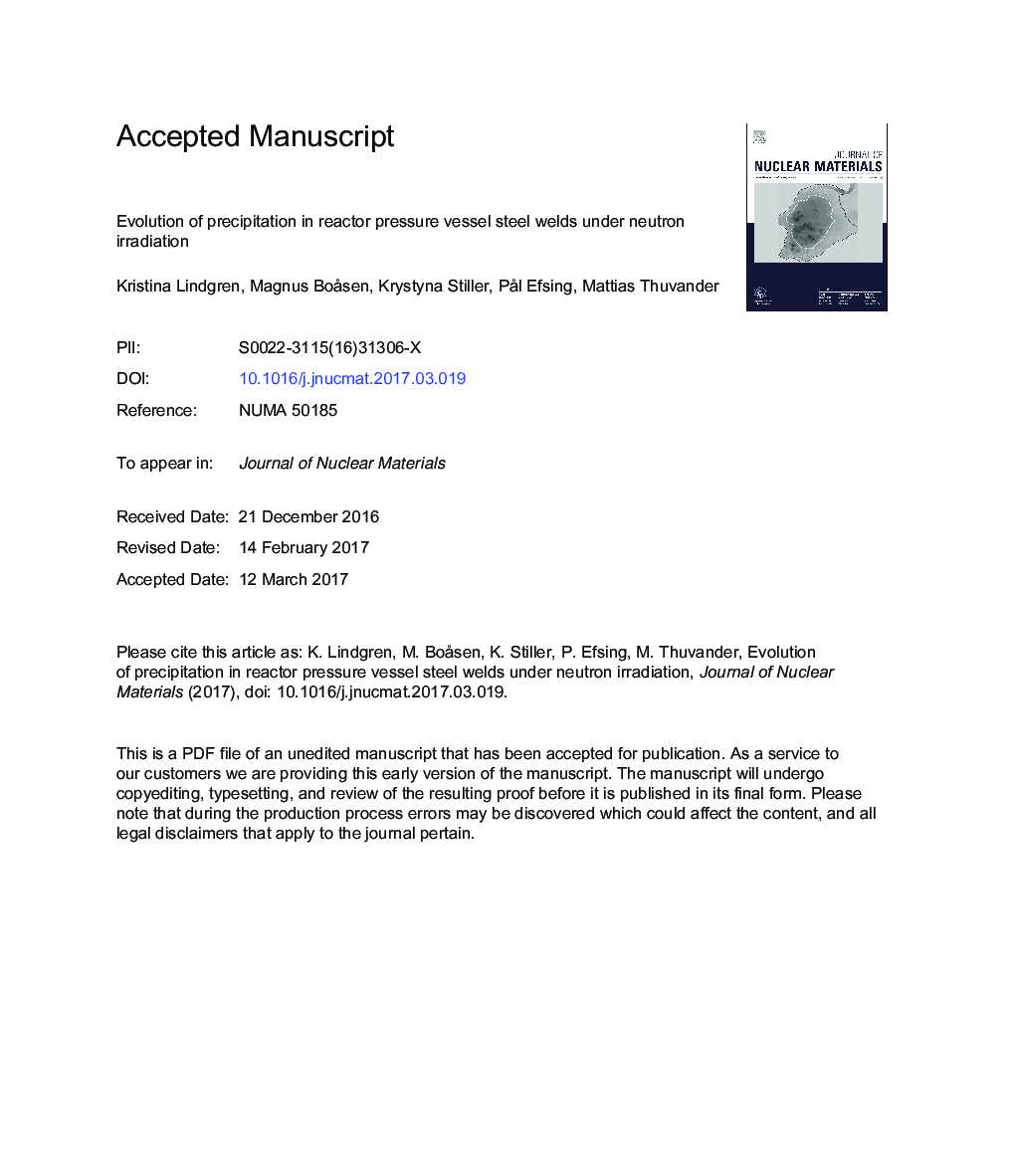| Article ID | Journal | Published Year | Pages | File Type |
|---|---|---|---|---|
| 5454169 | Journal of Nuclear Materials | 2017 | 37 Pages |
Abstract
Reactor pressure vessel steel welds are affected by irradiation during operation. The irradiation results in nanometre cluster formation, which in turn affects the mechanical properties of the material, e.g. the ductile-to-brittle transition temperature is shifted to higher levels. In this study, cluster formation is characterised in high Ni (1.58%) low Cu (0.04%) steel welds identical to Ringhals R4 welds, using atom probe tomography in both surveillance material and in material irradiated at accelerated dose rates. Clusters containing mainly Ni and Mn, but also some Si and Cu were observed in all of the irradiated materials. Their evolution did not change drastically during irradiation; the clusters grew and new clusters were nucleated. Hence, both the cluster number density and the average size increased with irradiation time. Some flux effects were observed when comparing the high flux material and the surveillance material. The surveillance material has a lower cluster number density, but larger clusters. The resulting impact on the mechanical properties of these two effects cancel out, resulting in a measured hardness that seems to be on the same trend as the high flux material. The dispersed barrier hardening model with an obstacle strength factor of 0.15 was found to reproduce the increase in hardness. In the investigated high flux materials, the clusters' Cu content was higher.
Related Topics
Physical Sciences and Engineering
Energy
Nuclear Energy and Engineering
Authors
Kristina Lindgren, Magnus Boåsen, Krystyna Stiller, Pål Efsing, Mattias Thuvander,
